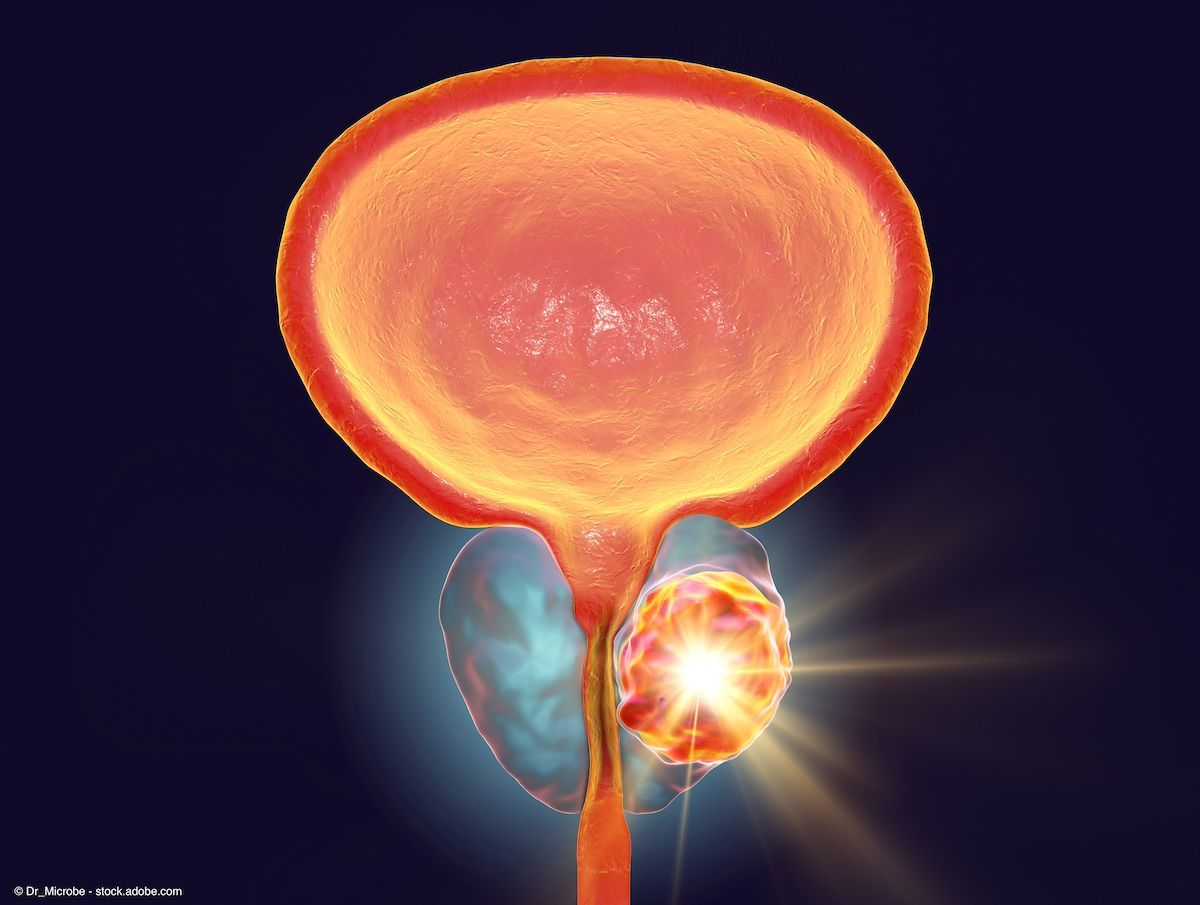News
Article
Botulinum toxin reduces PSMA therapy-related salivary gland toxicity
Key Takeaways
- Botulinum toxin with an anti-nausea patch reduces salivary gland toxicity in PSMA-directed radiopharmaceutical therapy for metastatic prostate cancer.
- A 30% reduction in PSMA uptake by salivary glands was observed, maintaining treatment efficacy.
- The study involved 14 patients, with IncoA injections and scopolamine patches administered before therapy.
- The regimen was well tolerated, with no serious adverse events or treatment discontinuations due to dry mouth.
The approach was associated with a 30% decrease in PSMA uptake by the salivary glands without compromising the treatment’s efficacy.
Use of botulinum toxin (IncoA, Xeomin) with an anti-nausea patch appears to mitigate salivary gland toxicity in patients with metastatic prostate cancer who are undergoing prostate-specific membrane antigen (PSMA)-directed radiopharmaceutical therapy.1,2
The regimen was found to be well tolerated, with no serious or systemic adverse events reported.

Investigators reported at the Society of Nuclear Medicine and Molecular Imaging 2025 Annual Meeting that this approach was associated with a 30% decrease in PSMA uptake by the salivary glands without compromising the treatment’s efficacy.2
“In order for patients to maintain a good quality of life and continue with their treatments, it’s essential to address these serious dry mouth issues. Our study explored the use of Botox paired with a nausea patch on reducing radiation uptake to the salivary glands,” said Tianzhi Zhao, research assistant at the Theranostics Centre of Excellence in the Yong Loo Lin School of Medicine at the National University of Singapore, in a news release about the results.2
“While TANDEM therapy strategies with combined 225Ac- and 177Lu-PSMA-targeted RLT in a single low-activity cycle address certain challenges, effective salivary gland protection remains critical,” the authors wrote in their abstract.1
The study evaluated data from 14 patients, with a mean age of 68.0 ± 8.1 years. Patients received percutaneous injections of 250 units of IncoA prior to their scheduled PSMA radioligand treatments. These were injected in 1 parotid gland as well as the contralateral submandibular glands 3-4 weeks for before 177Lu/225Ac-radioligand therapy. Patients also received transdermal scopolamine patches behind the ears starting 72 hours before radioligand therapy and remaining until 2 hours post radioligand therapy. PSMA uptake in the salivary glands was evaluated using SPECT/CT imaging.1
The investigators reported that the cohort received 1 to 2 cycles of treatment with 177Lu (5.05 ± 1.09 GBq) and 225Ac (6.87 ± 3.14 MBq) per cycle, and received a total of 16 IncoA treatments. The cohort was heavily pretreated, with “a median PSA [prostate-specific antigen] level of 59 [ng/mL] (range, 17.2 [ng/mL] to 2130.0 [ng/mL]) and a mean Karnofsky performance score of 85.0 ± 11.6,” according to the abstract. Four patients in the cohort received only IncoA; the remaining patients received both IncoA and scopolamine patches.1
When comparing the IncoA-treated parotid glands with the opposite parotid gland, investigators reported a mean 30% reduction in PSMA uptake in the IncoA-treated glands. With the submandibular glands, a mean 17% reduction in PSMA uptake was observed in the IncoA-treated glands vs the opposite glands. The regimen was found to be well tolerated, with no serious or systemic adverse events reported. In addition, there was no discontinuation of PSMA treatment due to dry mouth.2
“This study demonstrates that Botox, administered at recommended doses in combination with a nausea patch, offers a promising therapeutic strategy for reducing radiation-induced salivary gland toxicity without compromising PSMA tumor uptake,” said Jingjing Zhang, MD, PhD, assistant professor at the Theranostics Centre of Excellence in the Yong Loo Lin School of Medicine at the National University of Singapore, in the news release. “The significance of this work lies in its direct patient benefit and its potential to expand the therapeutic utility of PSMA radiopharmaceutical therapy, particularly with alpha-emitting radionuclides like 225Ac.”2
REFERENCES
1. Zhao T, Mueller J, Fan X, Jakobsson V, Zhang J, Baum RP. Botulinum toxin plus scopalamine as a protective strategy against salivary gland toxicity in patients treated with 225Ac- and 177Lu- PSMA-targeted radioligand therapy (TANDEM PSMA-RLT). J Nucl Med. 2025;66(supplement 1) 251452
2. Botox mitigates debilitating dry mouth in prostate cancer patients receiving radiopharmaceutical therapy. Society of Nuclear Medicine and Molecular Imaging. June 24, 2025. Accessed June 25, 2025. https://www.eurekalert.org/news-releases/1088797
Newsletter
Stay current with the latest urology news and practice-changing insights — sign up now for the essential updates every urologist needs.
2 Commerce Drive
Cranbury, NJ 08512
All rights reserved.






